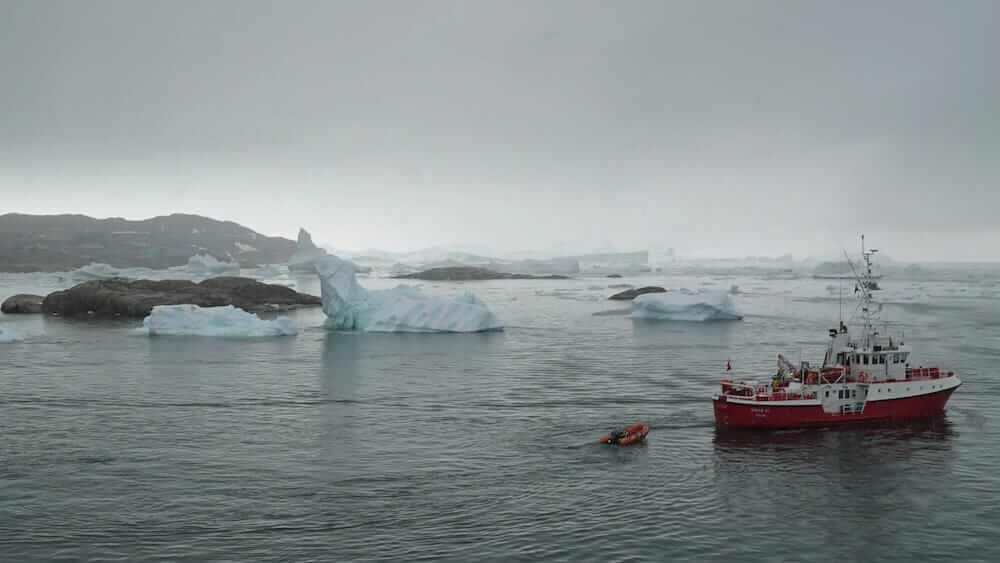Infrastructure in the Arctic: The Arctic Institute Infrastructure Series

From military bases to subsea cables, infrastructure is a key mechanism for facilitating human and nonhuman operations and engagements in the Arctic region. Photo: U.S. Department of State
Infrastructure is a critical way for humans to engage with each other and the natural environment. Railroads, ports,1) broadband internet,2) essential services for towns and settlements, military outposts,3) ice roads, mines,4) and airfields – just to name a few – all mediate relationships within a region. As anthropologist Brian Larkin writes, “infrastructures are built networks that facilitate the flow of goods, people, or ideas and allow for their exchange over space. As physical forms they shape the nature of a network, the speed and direction of its movement, its temporal items, and its vulnerability to breakdown.”5) In 2022, The Arctic Institute is presenting a series of articles on infrastructure and the built environment in the Arctic.
Infrastructure enables human engagement in the Arctic, in that it facilitates access, connection, inhabitation, and productivity. It supports the essential processes of habitation, from the physical structures of settlements and the provision of services like energy,6) water and sewage, to the facilitation of industrial, economic, and military activities, such as mining and communications. Its degradation, oftentimes due to the effects7) of permafrost8) and inadequate maintenance and funding, can inflict massive costs on individuals9) and local and municipal governments,10) sometimes even forcing migration or displacement.11)
Infrastructure, its location, its funding, its construction, its ownership – all have political and geopolitical dimensions. Investment in shipping12) or mining facilities can be a way that actors who do not have territory in the Arctic can engage or even exert influence within the region.13) The location and aesthetics of towns and settlements can have intense symbolism and play important roles in national narratives.14)
Infrastructure is a rich focal point for analysis. By interrogating structures and materials we can see how actors perceive their relationship to the environment and its inhabitants. The way that a road is built is evidence of many things: how regulations and laws were interpreted and translated into material form; the kind of contracts that were established to buy materials; how the terrain affected the route of the road; how the local ecosystem is affected; and how land was acquired. The militarization of a region can be interrogated as a geopolitical threat, while the development of broadband can have serious consequences for expanding a community’s access to medical and educational services. Debates over the funding and maintenance of structures can elucidate relationships between local, state, and sometimes federal entities, between public and private forces.
Looking at who is impacted by new or failing infrastructure is a means to see where nodes of impact are and can be instructive for how to allocate resources and funds so as to support communities. Thus, infrastructure is a means through which to explore the dynamics of foreign policy, political intentions, strategic investment, economic and financial innovations, the ability to marshal and distribute resources, narratives about Arctic space, interactions with the environment, and technological developments. It frames complicated political, cultural, environmental, and economic stories, centering them around something haptic and tangible. Thus, the built, and oftentimes unbuilt, environment provides a valuable lens through which to parse complex interrelationships. So this series asks: What can we learn from the hard bits?
These articles consider built space broadly, namely any spatial and material mechanism that is used to facilitate operations in a particular place. Contributors approach this question from a myriad of angles, investigating the political, theoretical, historical, social, cultural and legal dimensions of infrastructure. This series aims not only to provide insights into particular topics, but also to present frameworks for how to engage with infrastructure in the Arctic.
Infrastructure is key for the building of systems and the facilitation of operations in the region, relying on connection as a key objective. Jeremy Greenwood argues that icebreakers are the key to sustainable infrastructural development in the U.S. Arctic. Ebru Caymaz investigates the potential of the Northern Latitudinal Passage for the industrial and economic development of the Yamal Peninsula. In interrogating the means of connection, Alexandra Middleton and Bjørn Rønning evaluate the potential of subsea cables and data centers in the Arctic, while Christian Drury addresses questions of access in nineteenth century tourism in Norway. Alan Cunningham looks at the policies and legislation around undersea cables. Alla Pozdnakova assesses the development of space infrastructure and satellite-based services for development in the region. In its complexity and longevity, infrastructure also cycles through various owners and uses. Vidar Hole and Dr. Wenche Iren Sterkeby interrogate the valence of a Norwegian naval base as it cycles through private and military ownership, especially in light of recent re-militarization efforts. In considering energy infrastructure, Emily Aquilina traces the Norwegian government’s energy supply transition on Svalbard. But infrastructural systems can also break down, causing serious damage, as Kaylia Little considers in her article on the Iqaluit water supply crisis. Finally, in introducing the edited volume, More than ‘Nature’- Research on Infrastructure and Settlements in the North, Doris Friedrich explores key topics, such as how shifting perspectives on the relationship of nature and natural resources to patterns of living in the Arctic, and the tension between infrastructure and dimensions of mobility.
Olivia Wynne Houck was a Visiting Fellow with The Arctic Institute in 2021. She is currently a doctoral candidate at the Massachusetts Institute of Technology and a Fulbright-National Science Foundation Research Grantee.
References